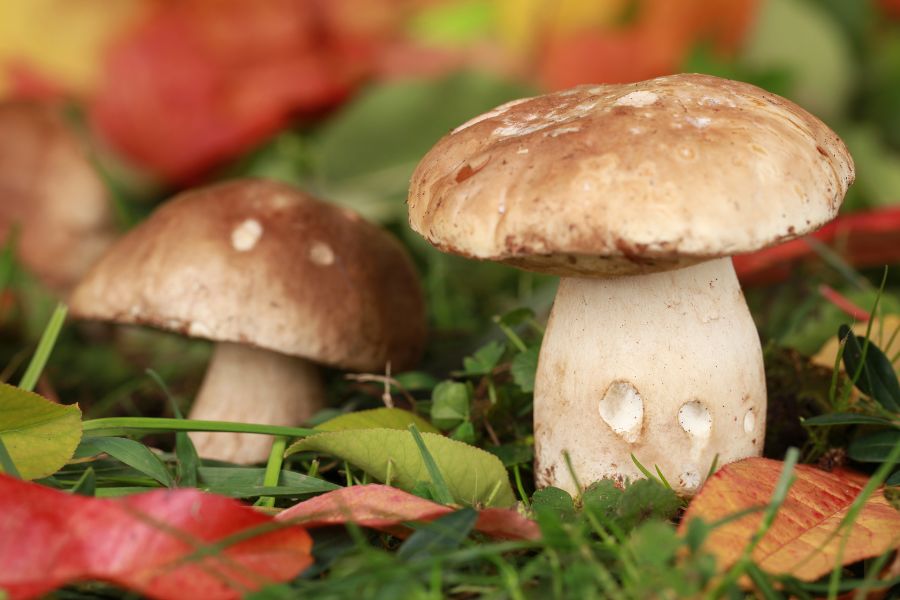Porcini mushrooms grow wild across parts of New York, tucked into forests where hardwoods and evergreens meet. Their meaty, savory depth makes them one of the most prized wild mushrooms for cooks and foragers alike.
When cooked, their dense, velvety texture holds up in everything from broths to sautés. Dried porcini are especially valuable, not only for their concentrated flavor but also for the rich liquid they leave behind when rehydrated.
The price tag reflects their culinary status—fresh porcini can range from $30 to $60 per pound, and dried varieties can sell for over $60 per pound. In cities where demand spikes or harvests are small, prices sometimes push above $70 per pound.
Several areas in New York have the right mix of forest cover and seasonal moisture to support porcini growth. If you know where to search, you could return with a mix of high-value mushrooms that are both delicious and hard to come by.
What We Cover In This Article:
- What different types of Porcini mushrooms look like
- The mushrooms that look like Porcini you should avoid
- Our best tips for finding Porcini mushrooms
- The top places in the state to find porcini
- The best times of year to look for them
- The extensive local experience and understanding of our team
- Input from multiple local foragers and foraging groups
- The accessibility of the various locations
- Safety and potential hazards when collecting
- Private and public locations
- A desire to include locations for both experienced foragers and those who are just starting out
Using these weights we think we’ve put together the best list out there for just about any forager to be successful!
A Quick Reminder
Before we get into the specifics about where and how to find these plants and mushrooms, we want to be clear that before ingesting any wild plant or mushroom, it should be identified with 100% certainty as edible by someone qualified and experienced in mushroom and plant identification, such as a professional mycologist or an expert forager. Misidentification can lead to serious illness or death.
All plants and mushrooms have the potential to cause severe adverse reactions in certain individuals, even death. If you are consuming wild foragables, it is crucial to cook them thoroughly and properly and only eat a small portion to test for personal tolerance. Some people may have allergies or sensitivities to specific mushrooms and plants, even if they are considered safe for others.
The information provided in this article is for general informational and educational purposes only. Foraging involves inherent risks.
What Porcini Mushrooms Look Like
Porcini technically refers to one mushroom species: Boletus edulis, also known as the king bolete. But in many parts of the U.S., several other edible mushrooms in the same genus or family are also called porcini. These close relatives belong to the broader Boletus group and share a similar look, taste, and texture:
Porcini (Boletus edulis)

Porcini, also known as king bolete, cèpe, or penny bun, is a large, thick-stemmed mushroom with a smooth brown cap and a sponge-like underside instead of gills. Its firm white flesh has a nutty, earthy flavor that holds up well in cooking and drying. This species is the classic or “true” porcini.
It’s most commonly found in the Pacific Northwest, especially in coastal forests of Oregon, Washington, and Northern California. It grows in coniferous woods, often near spruce, fir, or pine, and usually appear in the fall after consistent rainfall.
California King Bolete (Boletus edulis var. grandedulis)
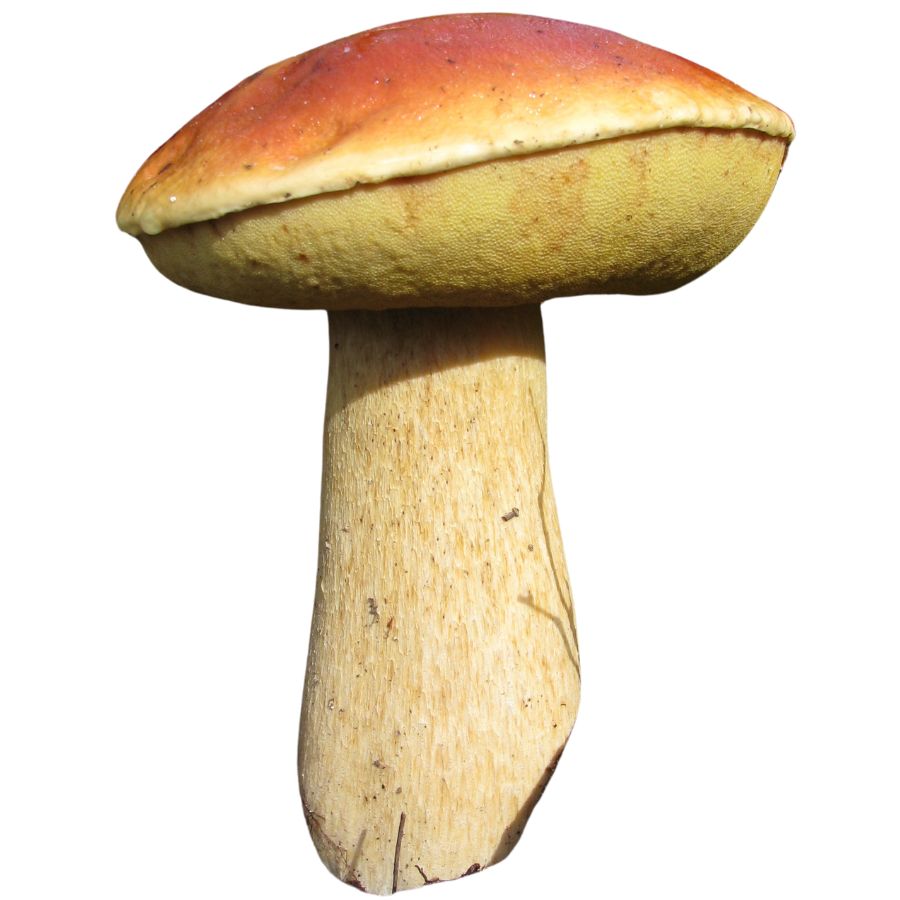
The California king bolete, sometimes called the Sierra porcini or just king bolete, is a large, stocky mushroom with a smooth brown cap and a thick white stem. It has a firm texture and a deep, nutty flavor that holds up well in cooking.
This porcini variety grows in the Sierra Nevada and coastal forests of California, especially from fall through early winter. It prefers mixed woodlands with fir, pine, or tanoak and often appears after the first heavy rains of the season.
Spring King Bolete (Boletus rex-veris)
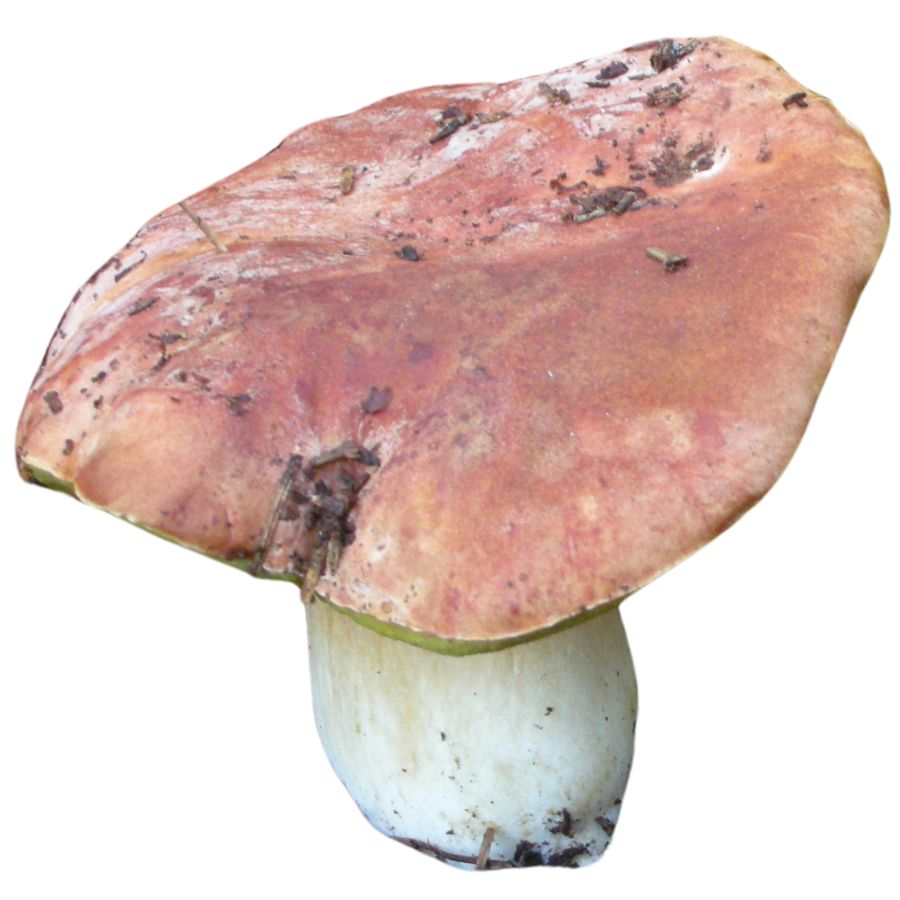
The spring king bolete, often called the spring porcini, has a pale brown cap, a stout white stem, and a firm texture that stays intact during cooking. Its flavor is rich and earthy, with a slightly sweet finish that sets it apart from other boletes.
You’ll find this mushroom in the western mountains of the United States, especially in California, Oregon, and parts of the Rocky Mountains. It appears in high-elevation conifer forests in late spring and early summer, usually near snowmelt.
White King Bolete (Boletus barrowsii)
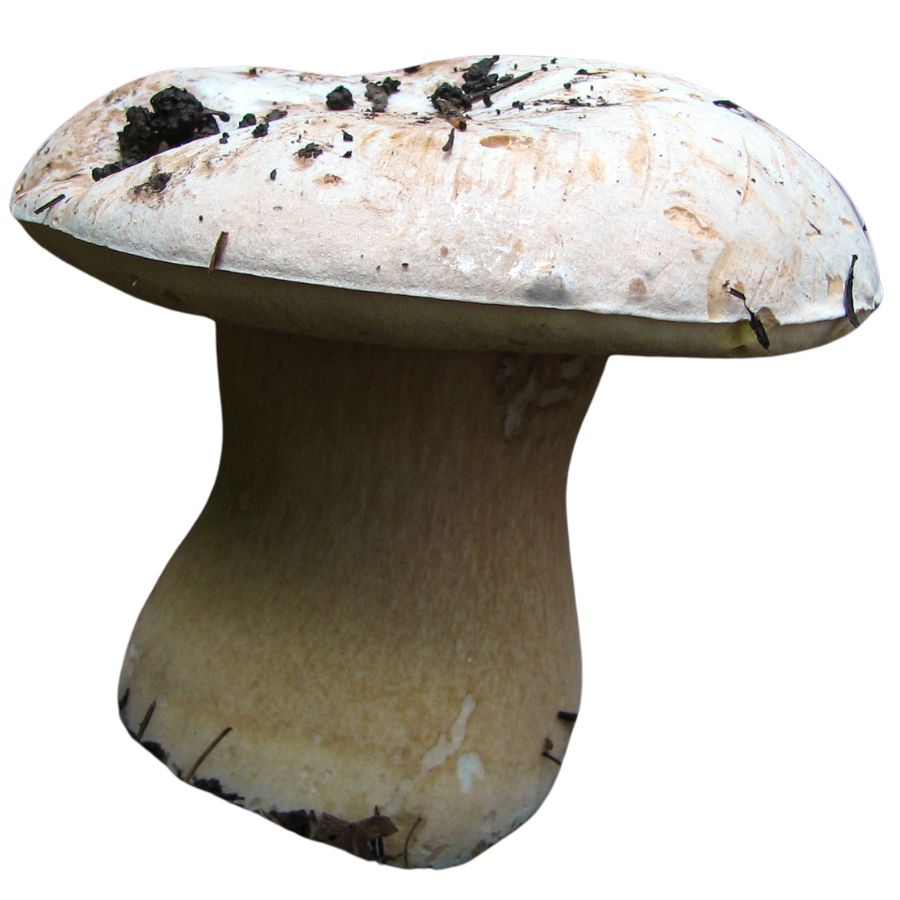
The white king bolete, sometimes called Barrows’ bolete or desert porcini, is a pale, chunky mushroom with a white to ivory cap and a thick stem. It has a smooth, mild flavor that deepens when cooked and is especially prized when young and firm.
It grows in the southwestern United States, especially in Arizona and New Mexico, and is often found in ponderosa pine forests. Unlike other porcini, it tends to fruit during the summer monsoon season after warm rains.
Almost Bluing King Bolete (Boletus subcaerulescens)
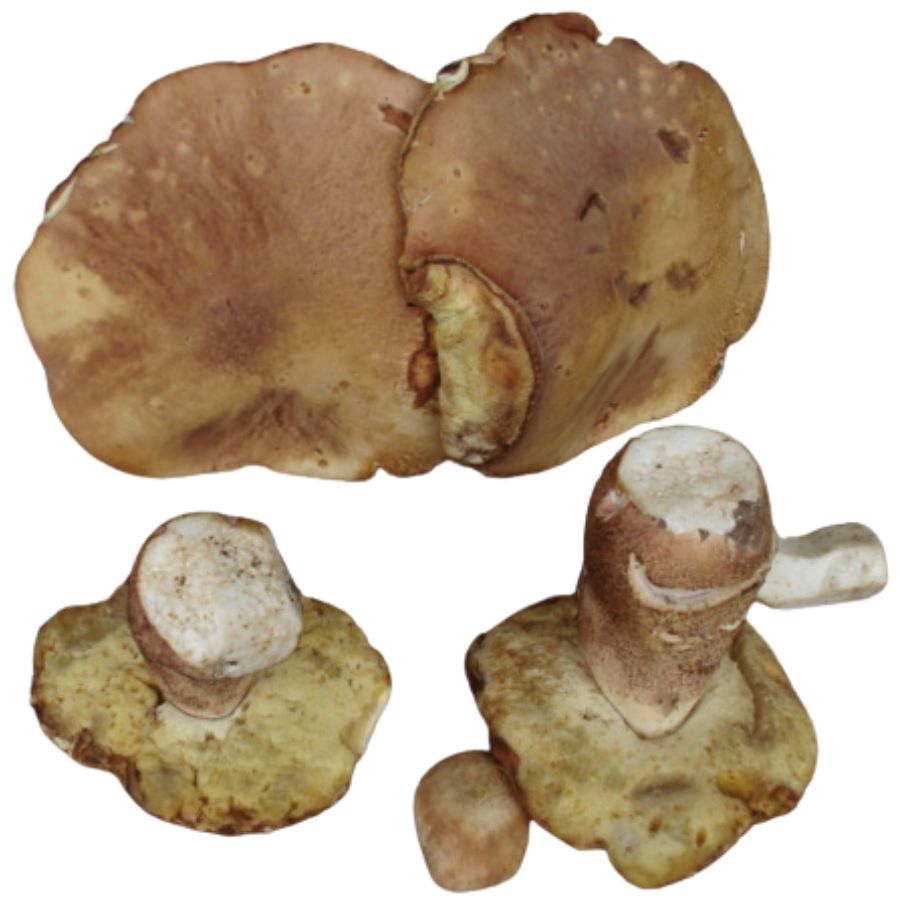
The almost bluing king bolete, also known as the blue-staining porcini, has a light brown cap and a stout stem covered in a fine network of raised lines. It gets its name from the faint blue tint that sometimes shows near the base when cut, though the color change is subtle and doesn’t always appear.
This porcini is edible and well-regarded for its firm texture and mild, nutty flavor. It cooks up nicely in sautés or soups and holds its shape without turning mushy.
It grows around the Great Lakes and into the Northeast, favoring mixed forests with spruce, fir, or pine and usually shows up in late summer after steady rain.
Fib King (Boletus fibrillosus)
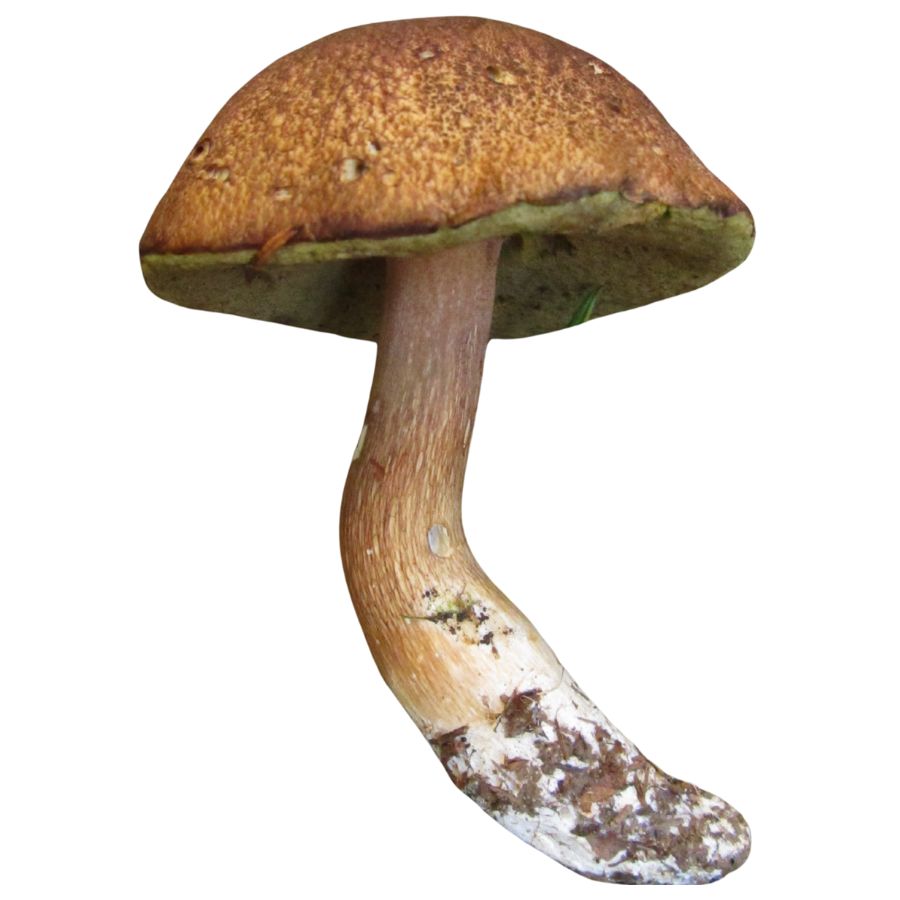
The fib king, sometimes called the fuzzy porcini, has a dark reddish-brown cap with a matte, finely fibrous surface and a thick pale stem. Its dense flesh has a mild, pleasant flavor that deepens when cooked, making it a solid addition to savory dishes.
You can find this mushroom is found in the Pacific Northwest, especially in the coastal forests of Oregon and Washington. It prefers old-growth conifer forests and usually fruits in the fall after sustained rain.
Mushrooms That Look Like Porcini But Aren’t
In this state, a handful of mushrooms resemble porcini at first glance. Knowing the differences can help you avoid a bad meal or worse:
Satan’s Bolete (Boletus satanas)
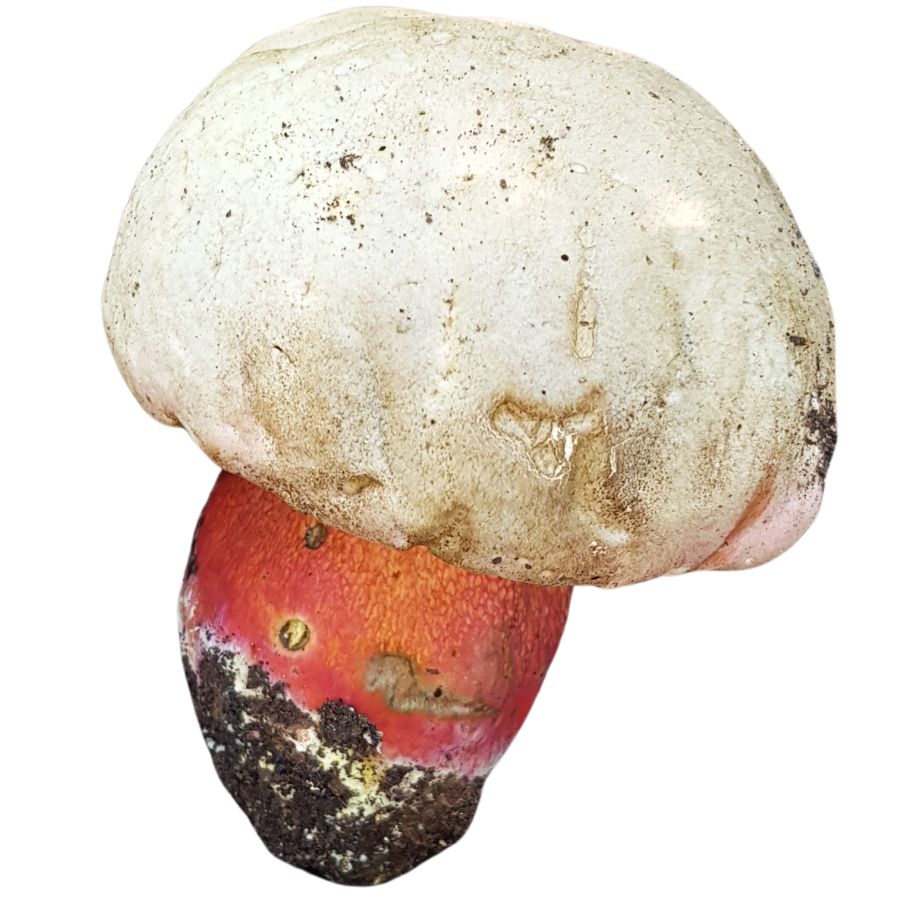
Satan’s bolete is a large, thick mushroom with a pale, almost white cap and a bright red stem. The pores underneath are yellow but bruise blue when handled, making it stand out from other boletes in the woods.
It grows in warmer parts of the southeastern U.S., especially in hardwood forests with oak or beech. This mushroom is toxic and should never be eaten as it can cause severe gastrointestinal distress including vomiting and diarrhea.
Sensitive Bolete (Boletus sensibilis)
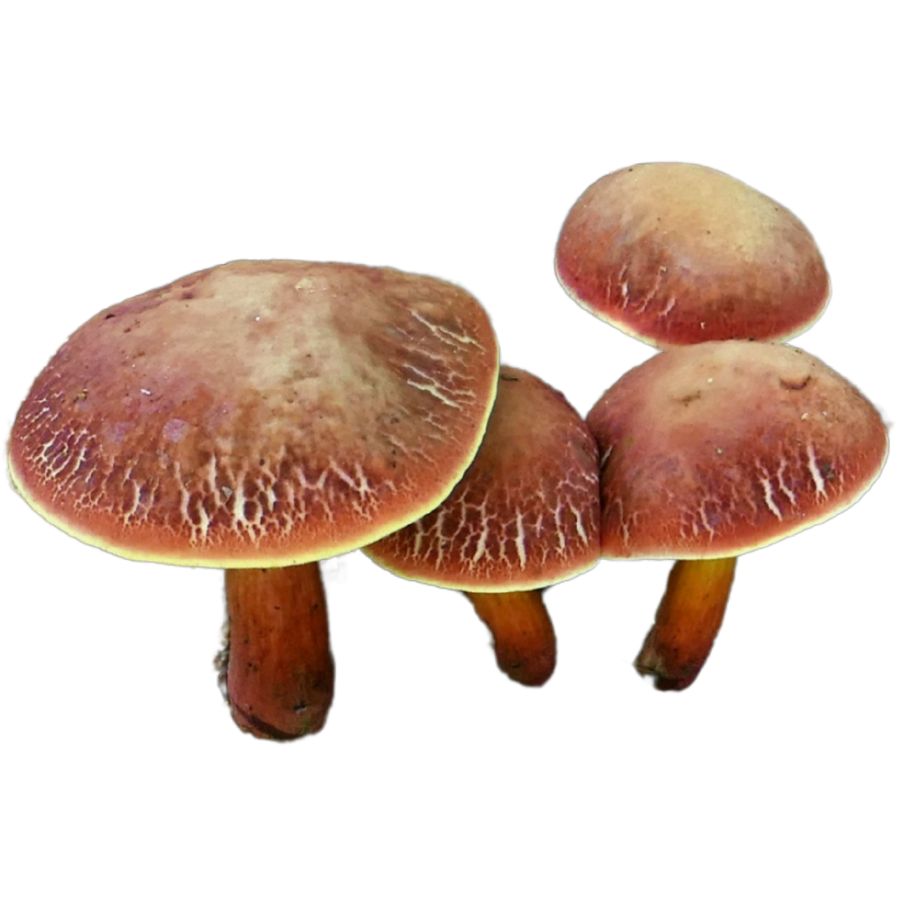
Sensitive bolete, sometimes called the “bruise bolete,” is known for how quickly it turns blue when touched or cut. It has a smooth yellow cap, red or pinkish pores, and a yellow stem that often shows bruising almost instantly.
You can find it across the eastern and southeastern U.S., especially in mixed hardwood forests during summer. While it might look appealing, this mushroom is considered toxic and can cause stomach cramps, nausea, and vomiting if eaten. Even small amounts may lead to unpleasant symptoms, so it’s best left alone.
Huron Bolete (Boletus huronensis)
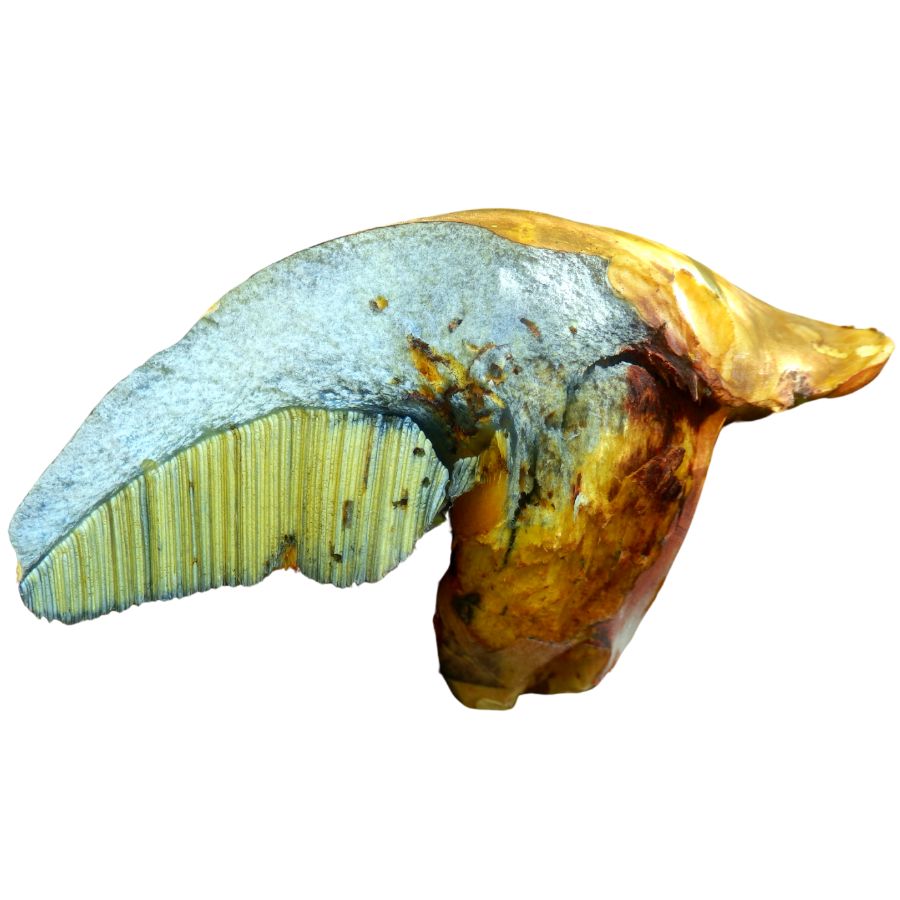
Huron bolete is a chunky mushroom with a dull brown cap, yellow pores, and a thick, slightly reddish stem that bruises blue when handled. It may not look as bold as other toxic boletes, but it’s still one to avoid.
Sometimes called the “Great Lakes bolete,” this species is found in the Great Lakes region, especially in Michigan and nearby states, growing under hardwoods like oak and beech. It’s considered poisonous and can cause intense nausea, cramps, and vomiting. While not deadly, the symptoms can be severe enough to require medical attention.
Bitter Bolete (Tylopilus felleus)
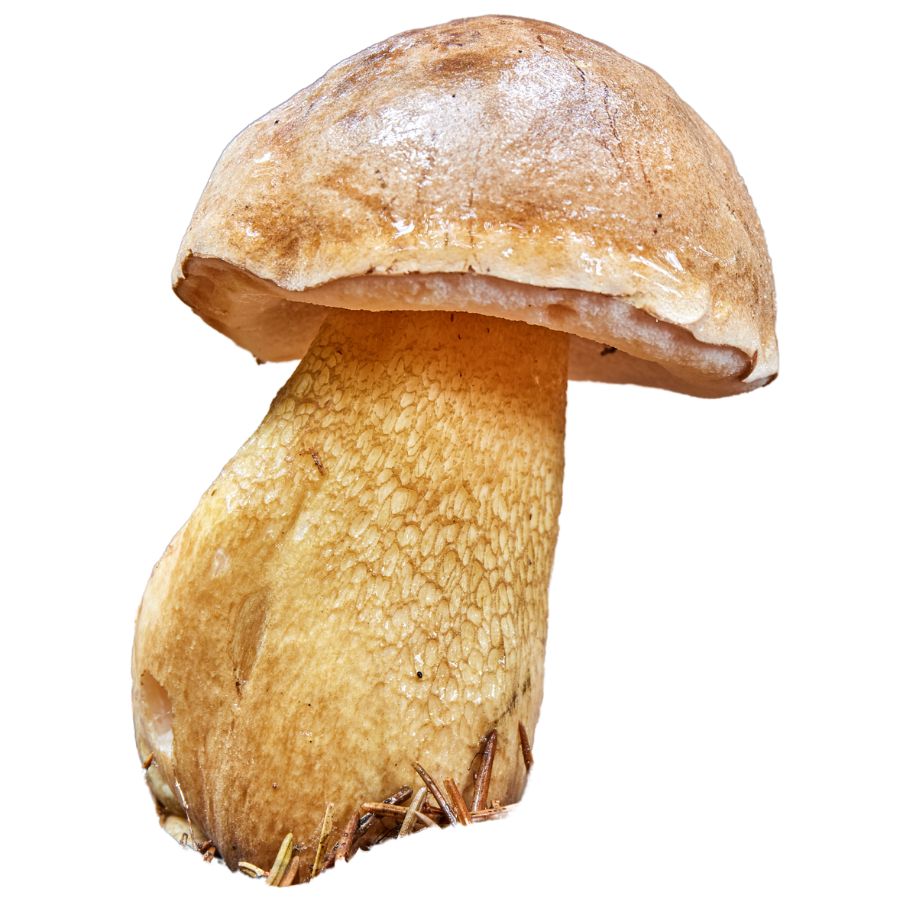
Bitter bolete, also called the “bitter tasting bolete,” looks a lot like an edible porcini at first glance. It has a brown cap, pinkish pores, and a thick, netted stem that can fool even experienced foragers.
This mushroom grows widely across the country, especially in eastern forests with oak or pine. It isn’t toxic, but the taste is so bitter that even a small piece can ruin a whole dish. Most people spit it out right away, but if swallowed, it can still lead to mild stomach upset.
Two-colored Bolete (Baorangia bicolor)
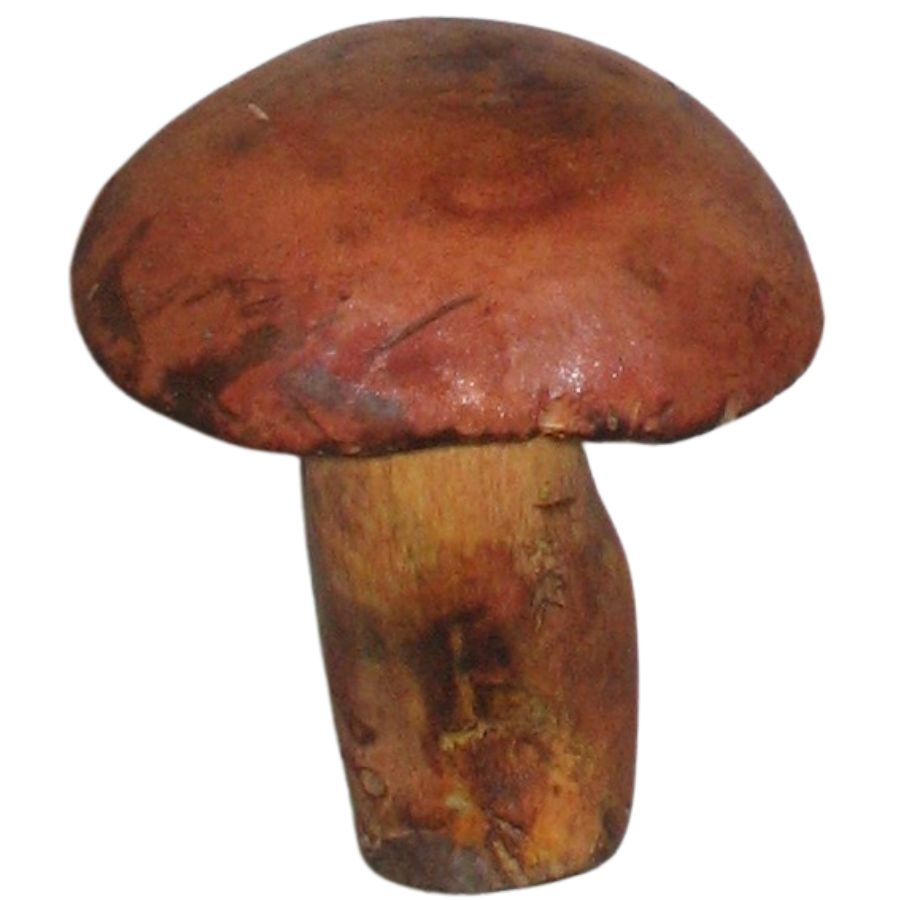
Two-colored bolete, sometimes called the “bicolor bolete,” has a bright yellow stem and cap with deep red tones near the base and edge. The pores are yellow and stain blue when touched, giving it a bold and colorful look.
It’s found across the eastern U.S., especially in oak and mixed hardwood forests during summer and fall. This species is edible and often enjoyed for its mild flavor and tender texture when cooked. Some people report digestive discomfort, so it’s best to test small amounts first.
How to Find Porcini Mushrooms
Porcini mushrooms don’t show up just anywhere. They grow in very specific places, and understanding the right mix of trees, soil, and seasonal conditions is the key to finding them.
Focus on Mixed Forests with Both Hardwoods and Conifers
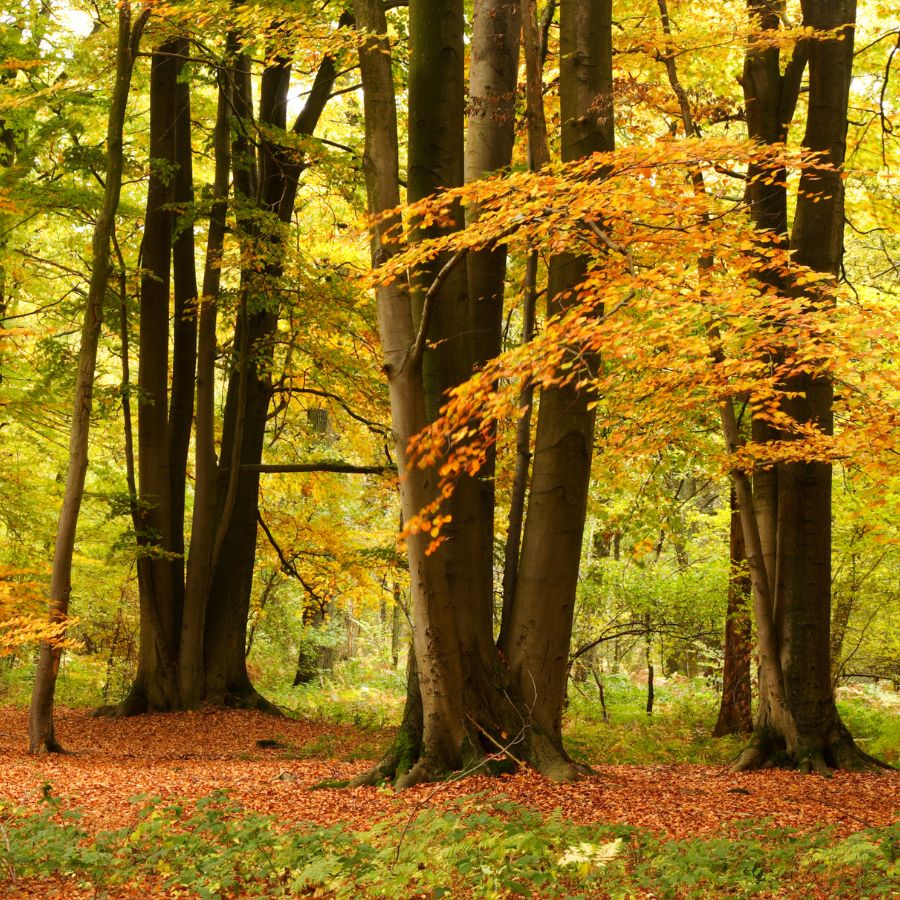
Mixed hardwood and conifer forests are common habitats for porcini mushrooms. In the Northeast, mature oak-maple forests with scattered hemlocks are good spots. In the Rockies and the Pacific Northwest, they thrive in higher-elevation forests dominated by spruce and fir.
Old-growth or long-established forests are usually more productive than young stands.
Wait Several Days After a Steady Rainfall
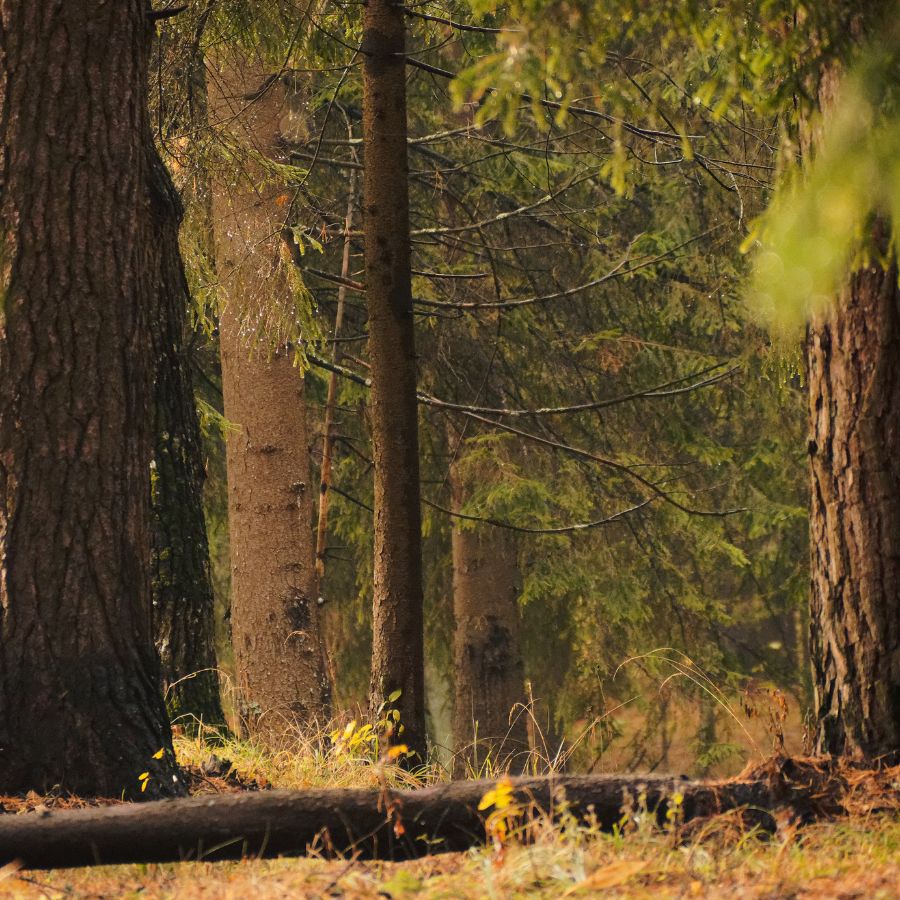
Consistent moisture is key. These mushrooms tend to appear several days after steady rain, especially if followed by warm temperatures.
They rarely grow during droughts or in overly wet, swampy areas. A moist but not soggy forest floor is ideal.
Search in Loose, Acidic Soil with Plenty of Leaf Litter
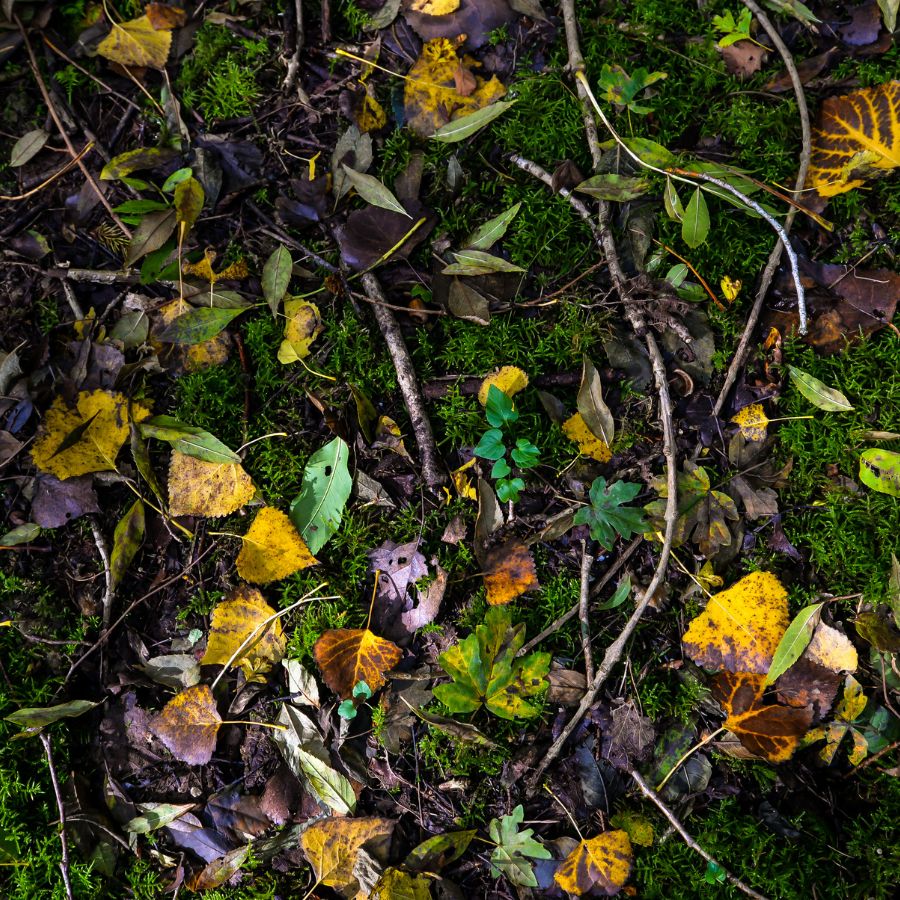
Porcini and their close relatives grow best in well-drained soils that are slightly acidic. Sandy loam or loose forest soil rich in organic material tends to support healthy mushroom growth.
They are rarely found in compacted or heavily clay-based ground. Look for them where the topsoil is crumbly and full of leaf litter.
Check Near Animal Paths, Broken Branches, and Debris Piles
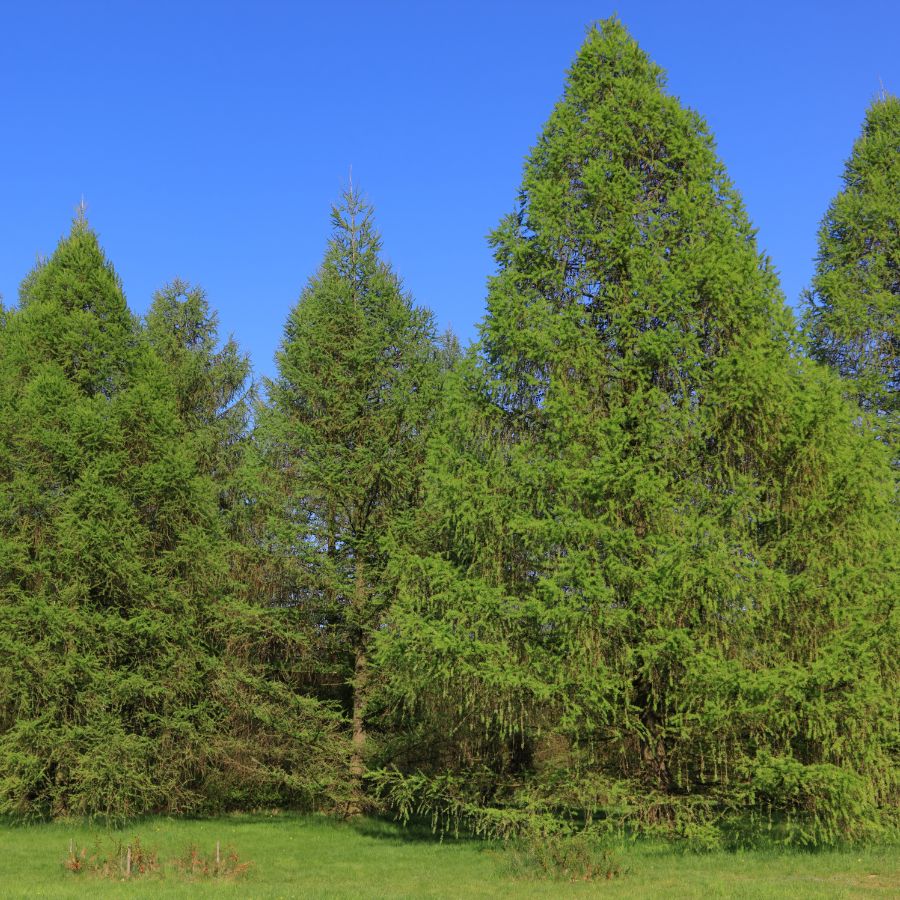
Porcini and edible boletes often grow near the edges of clearings, trails, or small breaks in the canopy. These spots get dappled light, which helps warm the soil while keeping it moist.
Look along well-used animal paths or areas with broken branches and scattered debris. These partial openings tend to support just the right conditions for a flush.
Follow Animal Dig Marks and Shifts in the Forest Floor
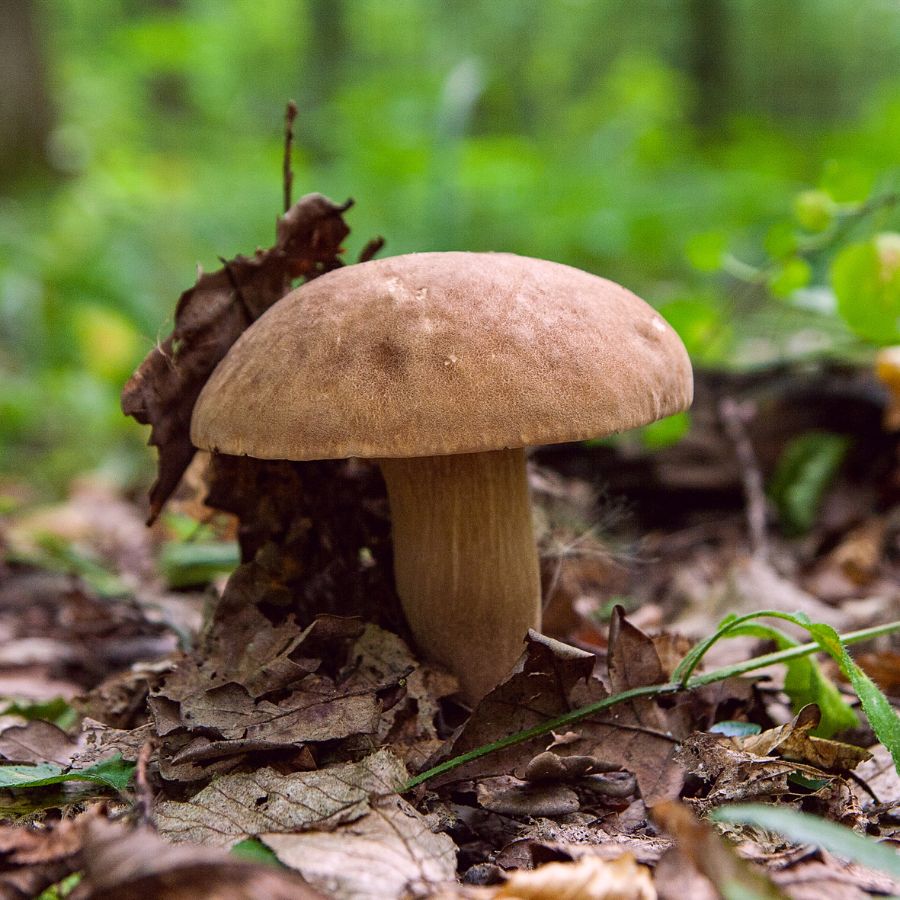
On the forest floor, mossy patches are good indicators for mushrooms. Porcini may push up under duff, creating small mounds or cracks in the soil. Displaced needles, uneven ground, or fresh animal dig marks can sometimes point to hidden mushrooms nearby.
Pay attention to slight changes in texture or elevation underfoot.
Focus on North-Facing Mountain Slopes
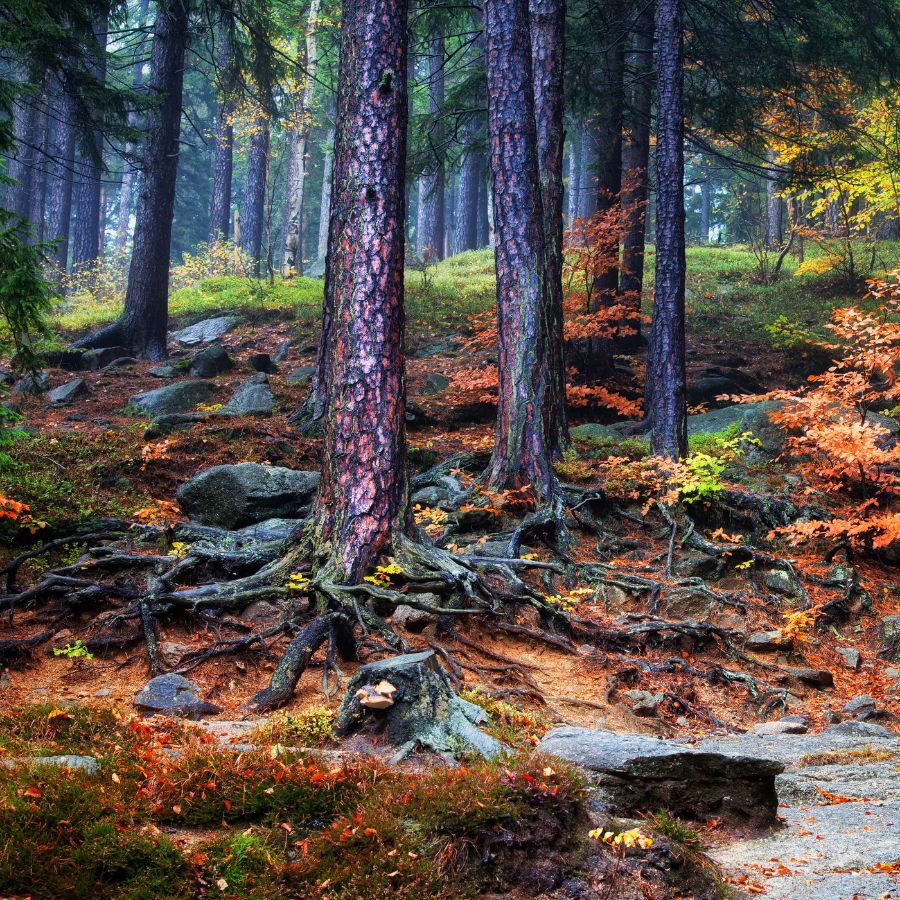
In mountain regions, porcini and edible boletes tend to appear between 5,000 and 9,000 feet. They favor gentle slopes with good water runoff but not erosion.
South-facing slopes may dry too quickly, while north-facing ones hold moisture longer. Sloped terrain with a soft duff layer is often productive after summer rains.
Before you head out
Before embarking on any foraging activities, it is essential to understand and follow local laws and guidelines. Always confirm that you have permission to access any land and obtain permission from landowners if you are foraging on private property. Trespassing or foraging without permission is illegal and disrespectful.
For public lands, familiarize yourself with the foraging regulations, as some areas may restrict or prohibit the collection of mushrooms or other wild foods. These regulations and laws are frequently changing so always verify them before heading out to hunt. What we have listed below may be out of date and inaccurate as a result.
Where You Can Find Porcini
Porcini mushrooms tend to grow in specific forests across the state, often tied to elevation, soil type, and tree cover. Knowing where to look can make all the difference in finding them during their short fruiting season.
Vanderwhacker Mountain Wild Forest
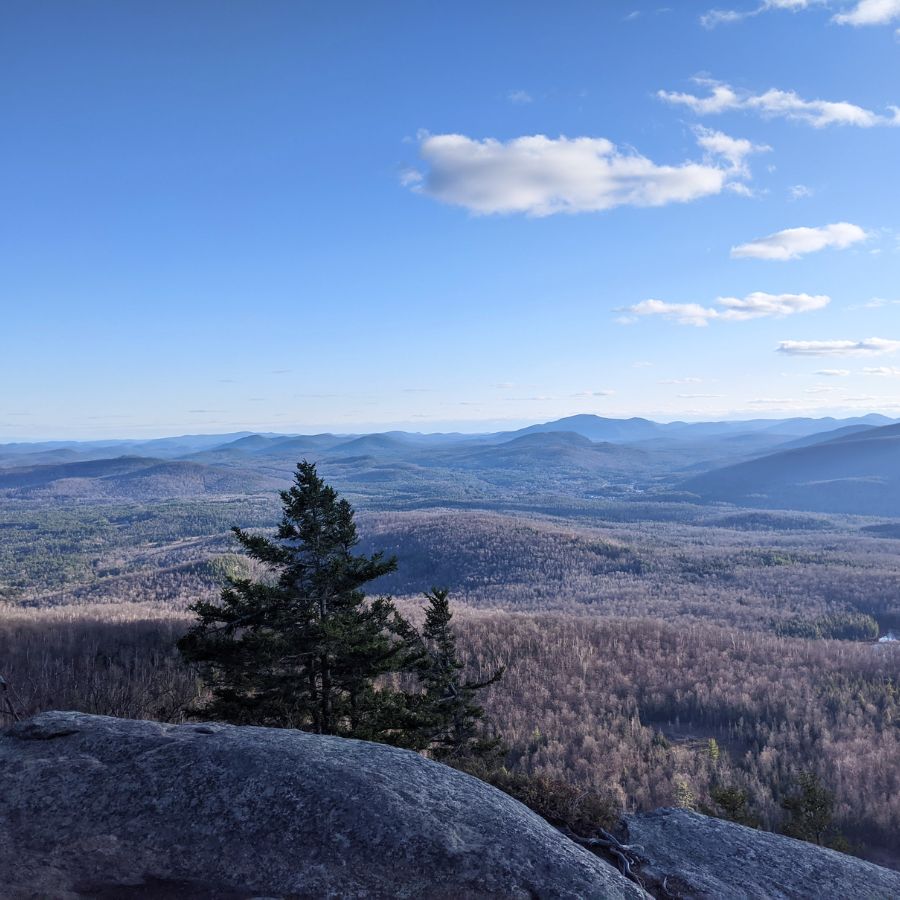
Vanderwhacker Mountain Wild Forest stretches across more than 90,000 acres in the central Adirondacks, with rugged peaks, remote ponds, and dense woodlands. Within its borders, several areas offer ideal conditions for finding porcini mushrooms throughout the growing season.
The Boreas River flows through the southern end of the forest, cutting through a mix of hardwood and conifer stands that stay damp well into late summer. Along the river’s western stretches—particularly near Lester Flow—you’ll find terrain that consistently supports a healthy flush of boletes, including porcini.
To the north, trails like Stony Pond Trail wind through mixed hemlock and beech forest with deep leaf litter and broken sunlight. That trail, along with the shaded slopes leading down to Stony Pond itself, has a reputation among seasoned foragers for turning up thick-stemmed porcini during the right weather window.
On the east side, the route to Moxham Mountain passes through several low, mossy drainages that retain moisture even in drier weeks. Those cool, shaded ravines—especially near the unnamed brooks around 2,300 feet—have produced porcini in years when the summer rains came steadily.
Moose River Plains Wild Forest
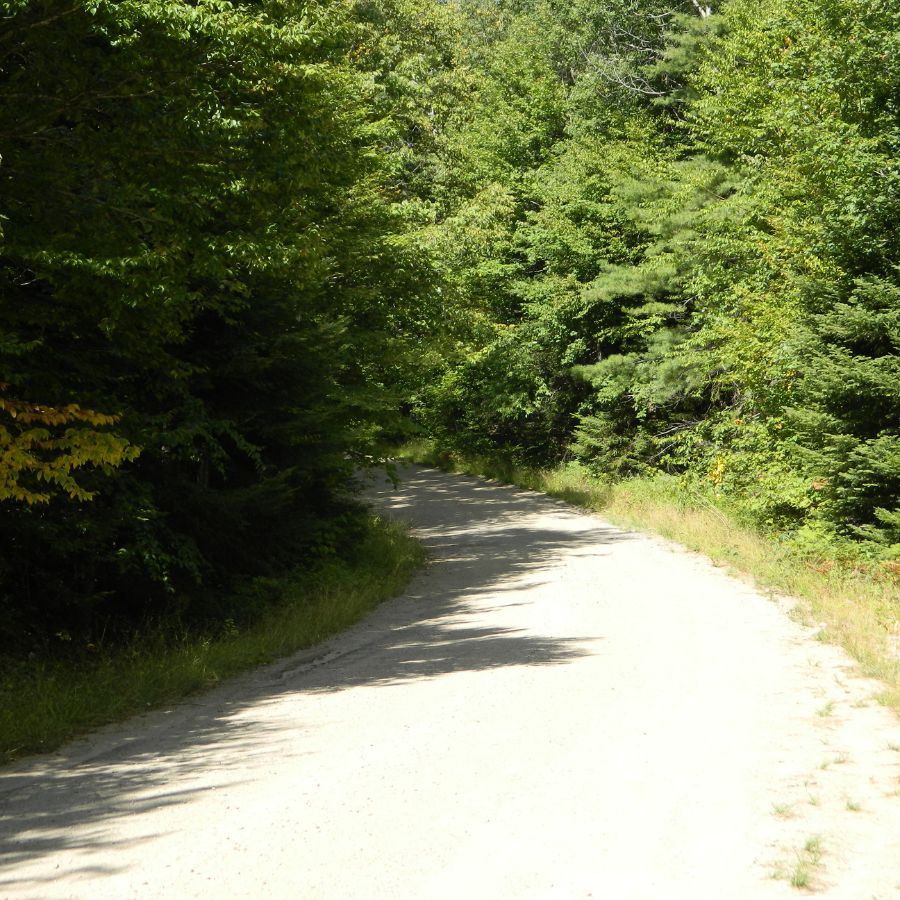
Moose River Plains Wild Forest is home to one of the longest stretches of dirt road open to motor vehicles in the Adirondacks, running over 20 miles between Inlet and Indian Lake. Along this corridor and deep into the surrounding hardwood and conifer stands, you’ll find several places where porcini mushrooms are known to thrive.
One area that sees the right combination of elevation, spruce-fir edges, and moist soils is near Helldiver Pond. The trail leading in winds through mature forest with a mix of hemlock, birch, and pine—an ideal setup for spotting porcini on the forest floor when the weather lines up.
Heading east, the Lost Ponds area offers another promising stretch, especially along the wooded ridges that flank the narrow footpath between the ponds. The open canopy and leaf litter here provide the kind of cover porcini often favor, especially after sustained rainfall.
Further south, the Otter Brook trail system weaves through dense, undisturbed forest that hasn’t seen heavy foot traffic in years. Several sections along the creek, particularly around Icehouse Pond, have just the right conditions to support porcini growth where the roots of older trees spread wide.
Grafton Lakes State Park
Grafton Lakes State Park sits on the Rensselaer Plateau, one of the largest high-elevation forested areas in New York outside the Adirondacks. That combination of elevation, mixed hardwood-conifer forest, and well-drained soils sets the stage for a few solid porcini-producing zones within the park’s boundaries.
One place that fits the bill is around Mill Pond, especially the wooded ridges above its western edge. The elevation there is just high enough, and the forest is dominated by a mix of beech and pine—ideal company for porcini to show up when conditions are right.
The Long Pond Trail makes its way through a stretch of mature forest that’s thick with duff and shaded by a healthy mix of oaks, hemlocks, and white pines. In late summer or early fall, that section between the trailhead and the northeastern inlet of Long Pond can be surprisingly productive for bolete species, including porcini.
You might also want to keep an eye on the wooded slope south of Second Pond, where red spruce and sugar maple share the hillside and the ground stays cool and damp. That patch tends to hold moisture longer than other areas in the park, and when porcini flush, that terrain often doesn’t disappoint.
Big Indian Wilderness
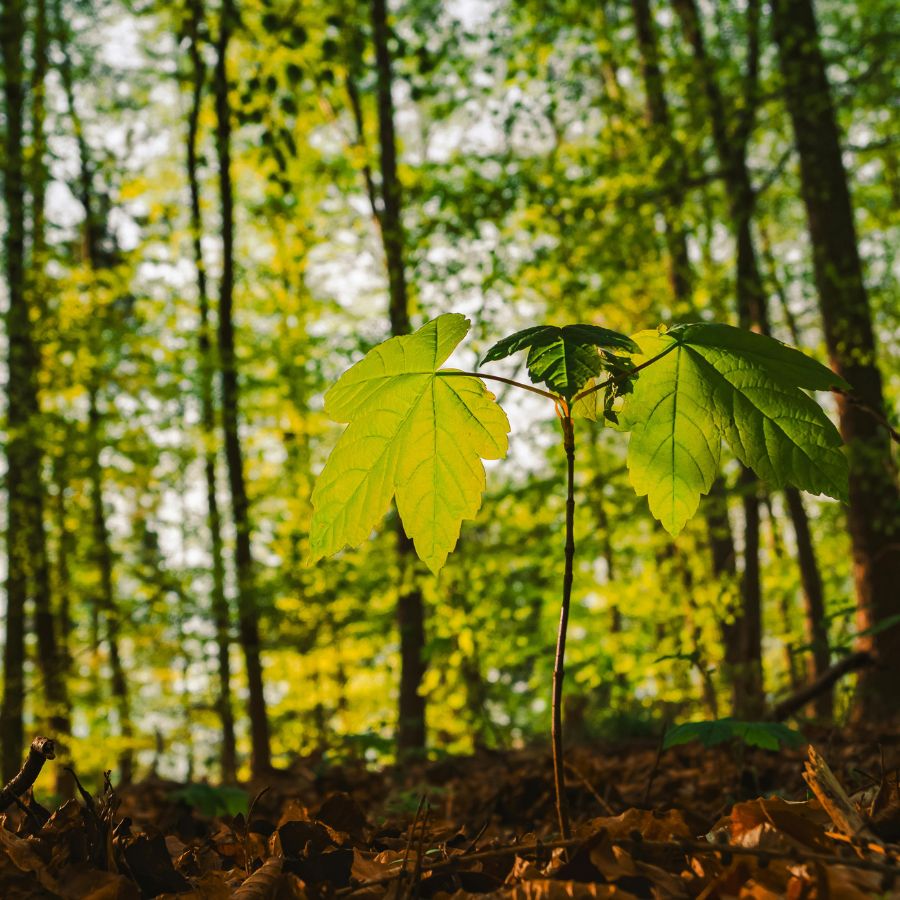
Big Indian Wilderness is one of the few places in the Catskills where black bears are commonly seen along high-elevation ridgelines. Within its dense mixed forests and remote hollows, you’ll also find conditions that favor the growth of porcini mushrooms.
The slopes around Fir Mountain, especially along the Pine Hill-West Branch Trail, are lined with mature hardwoods and softwoods that create the kind of shaded, moist understory porcini thrive in. The leaf litter and minimal underbrush in this area let these mushrooms push up cleanly after summer rains.
Along Biscuit Brook, the forest canopy stays dense and the ground stays damp well into midsummer, which makes it a promising stretch for porcini activity. The further upstream you go, the more likely you’ll find patches of red spruce and hemlock mixed with beech—ideal companions for these mushrooms.
The section of Seager-Big Indian Trail near the southern boundary, close to the McKinley Hollow area, crosses through older forest with scattered blowdowns and rich organic soil. When conditions are right, porcini can fruit in the mossy clearings and around the edges of decaying logs along this route.
Sundown Wild Forest
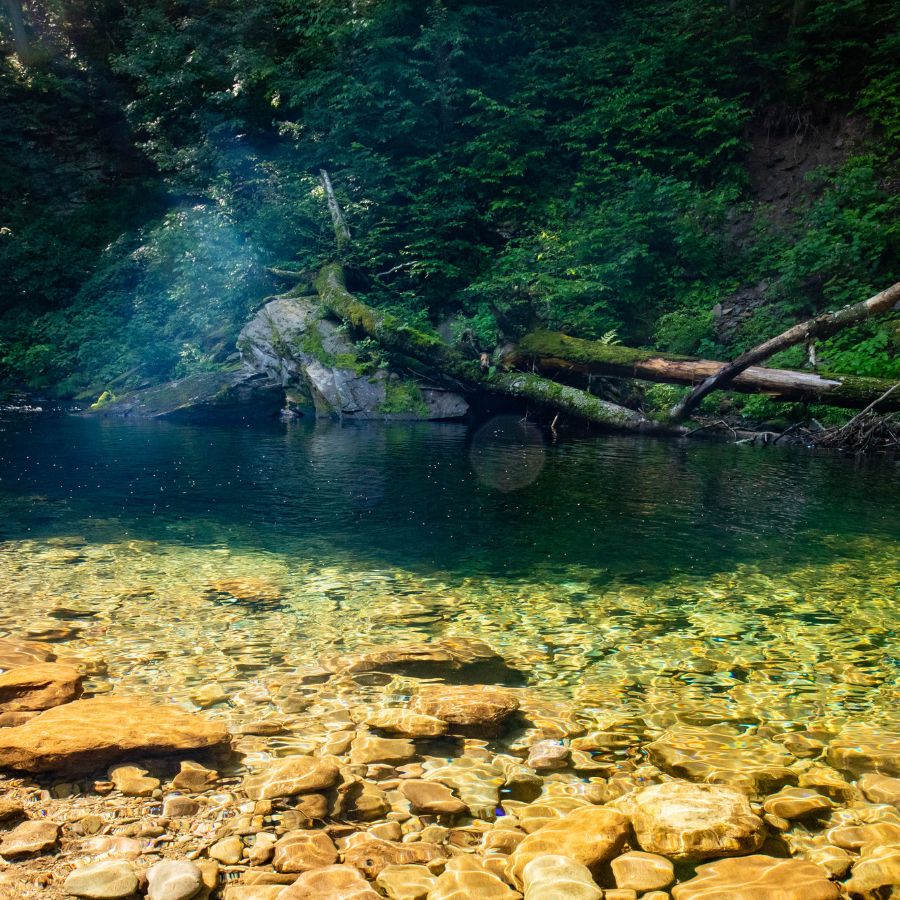
Sundown Wild Forest stretches across more than 30,000 acres of rugged Catskill terrain, including hidden waterfalls, steep ridgelines, and remote hardwood forests. In the quieter parts of this forest, there’s also good terrain for hunting porcini mushrooms in areas where mature hemlock and oak mix.
Near the Vernooy Kill Falls Trail, the dense canopy and mossy soil create ideal conditions for porcini to fruit after summer rains. The surrounding ravines and slopes along the creek offer the kind of moisture and leaf litter that help these mushrooms thrive.
The Peekamoose-Table Trail climbs through high-elevation forests where spruce and beech become more dominant. South-facing drainages off the ridge, especially where seasonal springs flow, tend to hold onto enough moisture in drier weeks to keep the forest floor productive.
Further west, the area around Sundown Stream and the connecting woods along Red Hill Road includes scattered glades that combine old deciduous growth with moist, shaded low ground. These pockets have the kind of quiet, undisturbed feel where porcini often appear in clusters.
Additional Locations to Find Porcini
There are several reliable locations across the state where porcini mushrooms grow:
| Adirondacks | Porcini Collection Details |
| Ferris Lake Wild Forest | Foraging for personal use only |
| Independence River Wild Forest | No commercial foraging allowed |
| Black River Wild Forest | Permit may be required in some areas |
| Vanderwhacker Mountain Wild Forest | Foraging allowed with limitations |
| Siamese Ponds Wilderness | Limited foraging allowed |
| Moose River Plains Wild Forest | Foraging for personal use only |
| Saranac Lakes Wild Forest | Permitted in designated areas only |
| Debar Mountain Wild Forest | No commercial foraging allowed |
| Taylor Pond Wild Forest | Foraging permitted |
| Catskills | Porcini Collection Details |
| Big Indian Wilderness | Foraging allowed, no sales permitted |
| Slide Mountain Wilderness | Foraging for personal use only |
| Willowemoc Wild Forest | No commercial foraging allowed |
| Sundown Wild Forest | Foraging permitted |
| Finger Lakes | Porcini Collection Details |
| Sugar Hill State Forest | Permit required in some sections |
| Hector Land Use Area (Finger Lakes NF) | Foraging permitted under federal rules |
| Danby State Forest | Foraging allowed in designated zones |
| Texas Hollow State Forest | Limited foraging permitted |
| Connecticut Hill Wildlife Management Area | Permit required for foraging |
| Western NY | Porcini Collection Details |
| Darien Lakes State Forest | Foraging for personal use only |
| Zoar Valley Multiple Use Area | No commercial foraging allowed |
| McCarty Hill State Forest | Foraging permitted |
| Hanging Bog State Forest | Limited seasonal foraging allowed |
When You Can Find Porcini
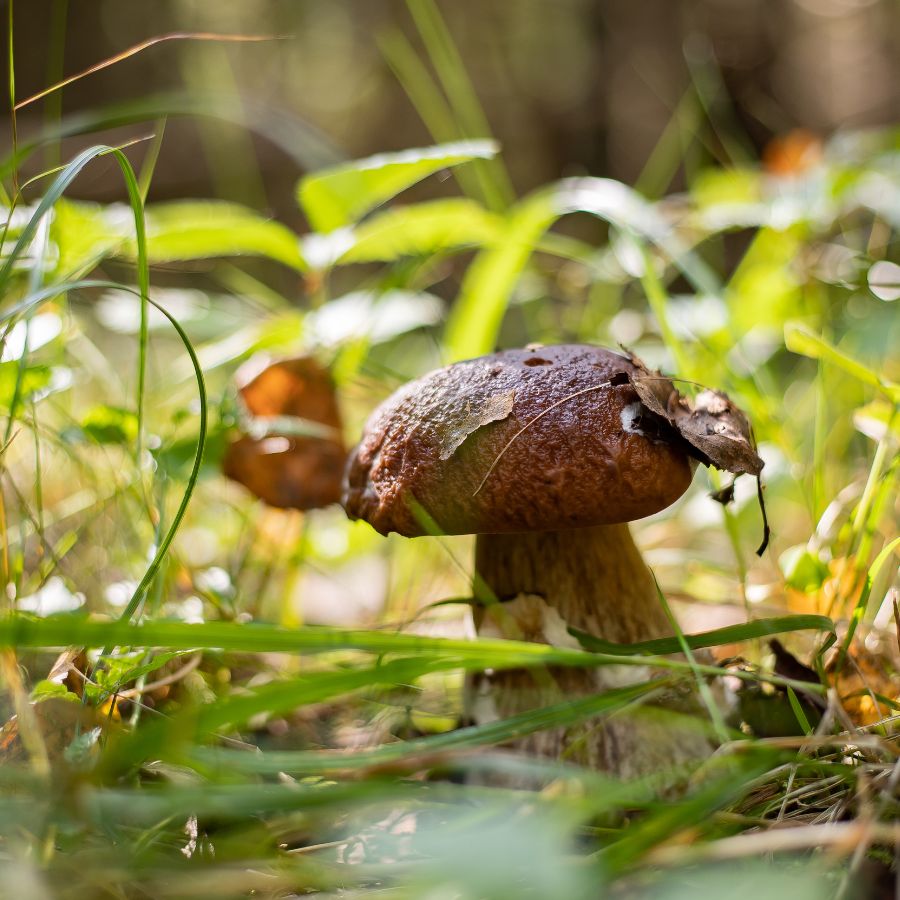
Porcini mushrooms are one of the most sought-after wild edibles in North America. Their meaty texture and rich, nutty flavor make them a favorite among foragers and chefs alike. Knowing when they appear is key if you want to find them in good condition and before the bugs do.
In most western states, porcini season usually runs from late summer into fall. You can start checking in July at higher elevations and continue through September or October depending on the region. In places like the Pacific Northwest and the Rocky Mountains, the timing often lines up with the first good rains after a dry spell.
In the eastern US, porcini mushrooms tend to fruit earlier. They often show up between late spring and mid-summer, especially in hardwood forests with oak or beech. A warm, wet stretch of weather can bring them up quickly, sometimes just days after a heavy rain.
Some parts of the country even have a second flush in the fall. Areas with mixed forests and a long growing season may see porcini pop up again in September or October. Local timing varies a lot, so it helps to learn what to expect in your state and watch the weather closely.
One Final Disclaimer
The information provided in this article is for general informational and educational purposes only. Foraging for wild plants and mushrooms involves inherent risks. Some wild plants and mushrooms are toxic and can be easily mistaken for edible varieties.
Before ingesting anything, it should be identified with 100% certainty as edible by someone qualified and experienced in mushroom and plant identification, such as a professional mycologist or an expert forager. Misidentification can lead to serious illness or death.
All mushrooms and plants have the potential to cause severe adverse reactions in certain individuals, even death. If you are consuming foraged items, it is crucial to cook them thoroughly and properly and only eat a small portion to test for personal tolerance. Some people may have allergies or sensitivities to specific mushrooms and plants, even if they are considered safe for others.
Foraged items should always be fully cooked with proper instructions to ensure they are safe to eat. Many wild mushrooms and plants contain toxins and compounds that can be harmful if ingested.

